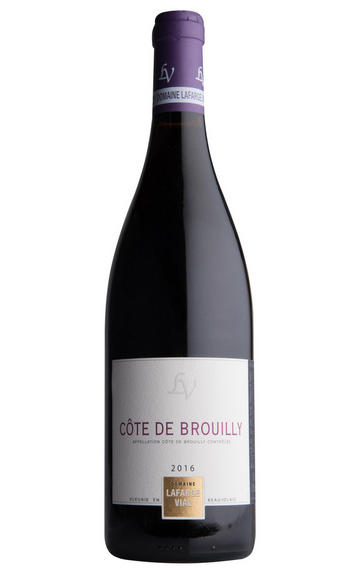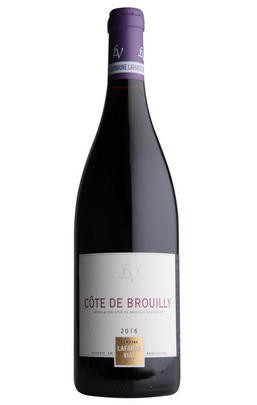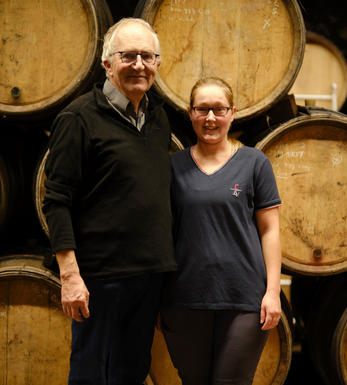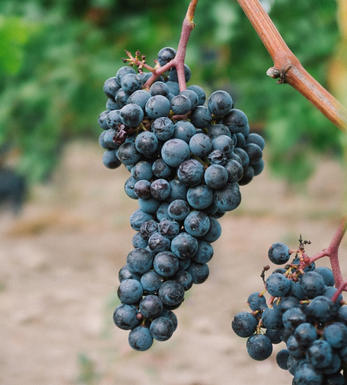
2017 Côte de Brouilly, Domaine Lafarge Vial, Beaujolais

Critics reviews
William Kelley - 22/09/2018
About this WINE

Lafarge Vial
Domaine Lafarge Vial is a well-established winery in Beaujolais, founded by Frédéric Lafarge and his wife Chantal in the spring of 2014. Situated in the commune of Fleurie, the domaine owns several vineyard parcels in Fleurie and one small adjoining parcel in Chiroubles within the lieu-dit Bel-Air.
The vineyards are traditionally trained in the gobelet method and planted on degraded granite soils. Right from the start, the Lafarges embraced biodynamic practices, mirroring their approach at Domaine Michel Lafarge in Volnay, and they are working towards obtaining biodynamic certification for their Fleurie and Chiroubles wines.
With a focus on producing Cru Beaujolais, the Lafarge family employs the same intensity and artistry as they do with their renowned Domaine Michel Lafarge in Volnay. They own over 4 hectares of Gamay vines, some up to 70 years old, spread across five parcels on steep granitic terrain.
The vineyard management is done manually, using horse ploughing on steep slopes. Winemaker Frédéric Lafarge follows traditional Burgundian vinification techniques, including natural yeast fermentation in open concrete vats, utilizing around 25% whole cluster, and employing gentle extraction with remontage only. The wines undergo a short 12-month ageing process in used oak barrels of 228L and 350L.
Like other established Burgundian producers, who have turned their attention to Beaujolais, the Lafarges emphasize producing wines from specific regional appellations, focusing on Fleurie and Chiroubles. Their dedication to crafting terroir-driven, serious wines has made an immediate impact in Beaujolais, and their commitment to organic and biodynamic practices reflects their belief in sustainable and artisanal winemaking.

Gamay
A French variety planted predominately in Beaujolais where it is the grape behind everything from light and often acidic Beaujolais Nouveau through to the more serious and well-structured wines from the 10 cru villages. It takes its name from a hamlet just outside Chassagne-Montrachet and was at one stage widely planted on the Côte d`Or. However it was gradually phased out due to its poor yield and supposed poor quality of its wines.
The majority of Gamay wines in Beaujolais are labelled as Beaujolais or Beaujolais-Villages and are deliciously juicy, easy drinking, gulpable wines. Of more interest are the Cru wines from the 10 villages in the north of the region where the soil is predominantly granitic schist and where the vines are planted on gently undulating slopes. These can be well-structured, intensely perfumed wines, redolent of ripe black fruits and, while delicious young, will reward medium term cellaring.
Gamay is also grown in the Touraine region of the Loire where it produces soft, well-balanced, gluggable wines for drinking young.


Buying options
Add to wishlist
Description
From a parcel totalling 0.66 hectares, these 55-yearold vines are planted on blue granite soil on the Mont de Brouilly. A quarter was whole-bunch fermented. The nose has rich, almost black fruit and a touch of garrigue spice, while the palate is stony with meaty black cherry and a firm, mineral texture. Drink 2021-2028.
Michel Lafarge (b. 1928) and his son Frédéric make use of their combined experience to produce some of the greatest wines in Volnay. There is nothing modern in their winemaking, though the meticulous care of their biodynamically farmed vineyards puts the domaine at the forefront of viticultural practices. When they are working on a patch of vines they are usually accompanied by their hens who eat up any lurking pests. The grapes are de-stemmed, vinified traditionally and very little new oak is used in the cellar. In 2014, they purchased vineyards in the Beaujolais which are farmed using the same biodynamic practices as employed in the Côte de Beaune.
Frédéric was keen to highlight the solidarity shown between vignerons at the end of April, as they mobilised to put in place measures to prevent a repeat of the frosts of 2016. Burning dampened straw bales at strategic locations, they succeeded in creating cloud cover which saved the vast majority of the vineyards. He also stressed the importance of “fractional harvesting” – waiting until each parcel is fully ripe before picking – and feels that the domaine’s biodynamic practices allow the grapes to achieve even ripening and balance, a real boon in early vintages such as 2017. For those with long memories, 90-year-old Michel compares 2017 to 1947 and 1964
wine at a glance
Delivery and quality guarantee